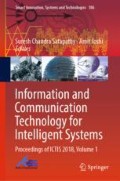Abstract
The increase in the energy consumption of any device has led to the concept of energy harvesting (which simply means extracting energy from the environment). In this paper, the environmental waste heat energy is extracted and then converted into electric energy using thermoelectric concept. Depending on the temperature difference between heat obtained from the heat sources and the environment, the conversion is done. Here, the waste heat energy, we are using, is obtained from heat leakages produced by the objects like hot bag, boiling water, electric heat pad, human body, etc., which is converted to charge real-time applications and to run various digital circuits. The ultra-low voltage step-up converter and buck–boost circuit are used for obtaining required potentials for charging and running circuits. This paper gives the information about the thermoelectric effects, concept of TE modules, use of TEC as TEG, and the simulation of electric system design to charge real-time applications.
Access this chapter
Tax calculation will be finalised at checkout
Purchases are for personal use only
References
Ugalde, C., Anzurez, J., Lazaro, I.I.: Thermoelectric Coolers as Alternative Transducers for Solar Energy Harvesting. In: IEEE Electronics. Robotics and Automotive Mechanics Conference, pp. 637–641. Morelos (2010)
Pallavi, K., Vijaya, K.: Comparative study of TE materials for heat energy harvesting with the help of TEC module. Int. J. Adv. Res. Sci. Eng. 06(11), 1–11 (2017)
Bulat, L.P.: Effect of electrons and phonons temperature mismatch on thermoelectric properties of semiconductors. In: 1997, XVI International Conference on Thermoelectrics Proceedings ICT, pp. 567–570. Dresden (1997)
Nesarajah, M., Frey, G.: Thermoelectric power generation: Peltier element versus thermoelectric generator. In: 2016 IECON–42nd Annual Conference of the IEEE Industrial Electronics Society. pp. 4252–4257. Florence (2016)
Buist, R.J., Lau, P.G.: Thermoelectric power generator design and selection from TE cooling module specifications. In: 1997, XVI International Conference on Thermoelectrics Proceedings ICT ’97, pp. 551–554. Dresden (1997)
Maneewan, S., Zeghmati, B.: Comparison power generation by using thermoelectric modules between cooling module and power module for low temperature application. In: 2007, 26th International Conference on Thermoelectrics, pp. 290–293. Jeju Island (2007)
Poh, C.S., et al.: Analysis of characteristics and performance of thermoelectric modules. In: 2016, 5th International Symposium on Next-Generation Electronics (ISNE), pp. 1–2. Hsinchu (2016)
Chen, M.: Adaptive removal and revival of underheated thermoelectric generation modules. IEEE Trans. Ind. Electron. 61(11), 6100–6107 (2014)
Zaman, H.U., Shourov, C.E., Al Mahmood, A., Siddique, N.E.A.: Conversion of wasted heat energy into electrical energy using TEG. In: IEEE 7th Annual Computing and Communication Workshop and Conference (CCWC), pp. 1–5. Las Vegas, NV (2017)
Ishiyama, T., Yamada, H.: Suppression of heat leakage by cooling thermoelectric device for low-temperature waste-heat thermoelectric generation. In: IEEE International Telecommunications Energy Conference (INTELEC), pp. 1–5. Osaka (2015)
Rocha Liborio Tenorio, H.C., Vieira, D.A., De Souza, C.P.: Measurement of parameters and degradation of thermoelectric modules. IEEE Instrum. Meas. Mag. 20(2), 13–19 (2017)
Anatychuk, L.I., Lysko, V.V.: Methods for assuring high quality electric and thermal contacts when measuring parameters of thermoelectric materials. J. Thermoelectr. 4, 83–92 (2014)
Kannan, H., Reshme, T.K., Parthiban, P.: Thermoelectric charger. In: 2016 Online International Conference on Green Engineering and Technologies (IC-GET), pp. 1–4. Coimbatore (2016)
Yap, Y.Z., Naayagi, R.T., Woo, W.L.: Thermoelectric energy harvesting for mobile phone charging application. In: IEEE Region 10 Conference (TENCON), pp. 3241–3245. Singapore (2016)
Author information
Authors and Affiliations
Corresponding author
Editor information
Editors and Affiliations
Rights and permissions
Copyright information
© 2019 Springer Nature Singapore Pte Ltd.
About this paper
Cite this paper
Korde, P., Kamble, V. (2019). Efficient Energy Harvesting Using Thermoelectric Module. In: Satapathy, S., Joshi, A. (eds) Information and Communication Technology for Intelligent Systems . Smart Innovation, Systems and Technologies, vol 106. Springer, Singapore. https://doi.org/10.1007/978-981-13-1742-2_32
Download citation
DOI: https://doi.org/10.1007/978-981-13-1742-2_32
Published:
Publisher Name: Springer, Singapore
Print ISBN: 978-981-13-1741-5
Online ISBN: 978-981-13-1742-2
eBook Packages: Intelligent Technologies and RoboticsIntelligent Technologies and Robotics (R0)

